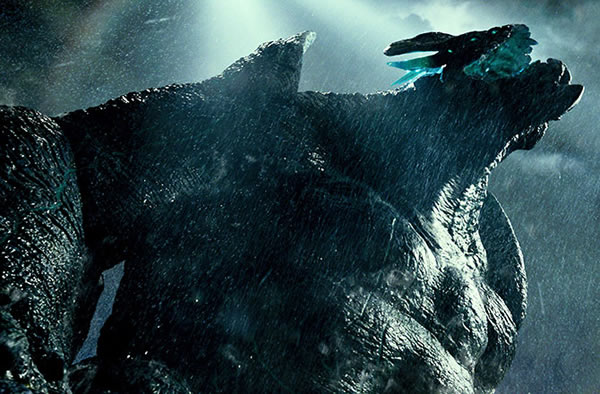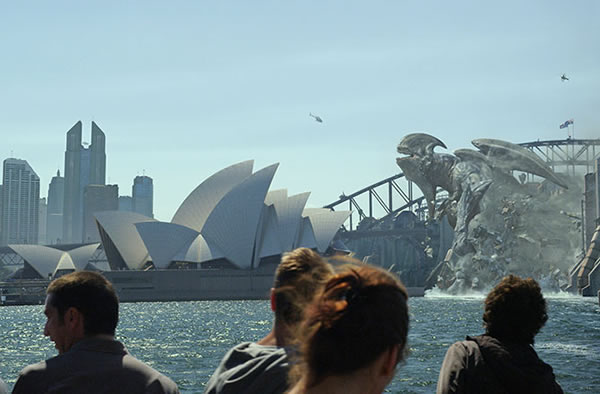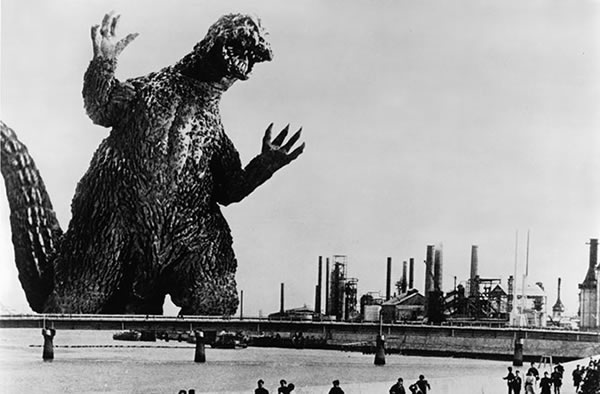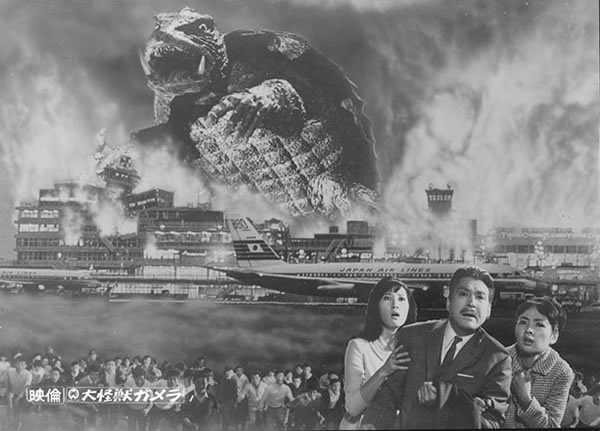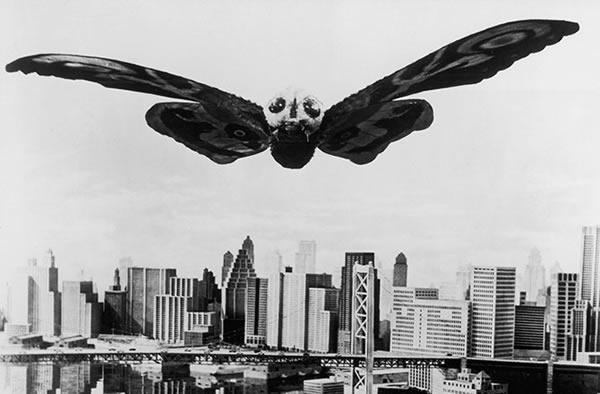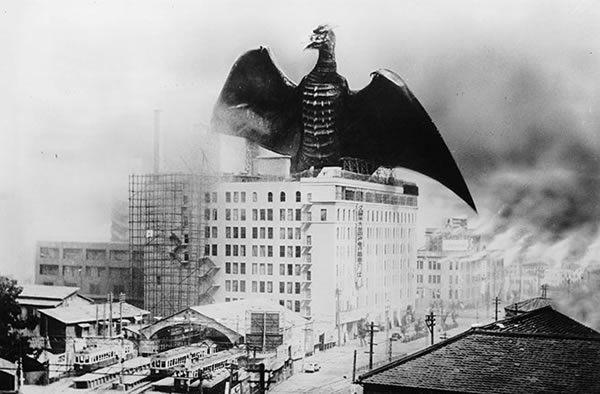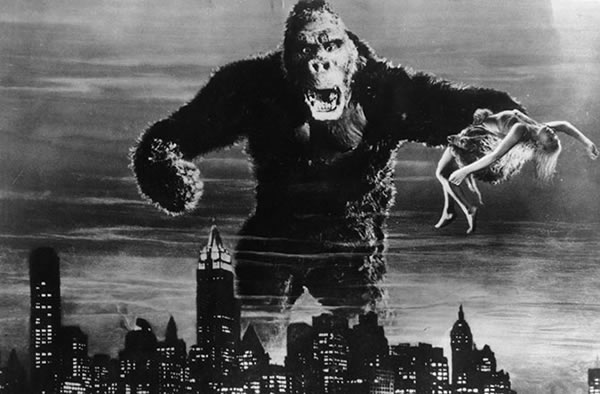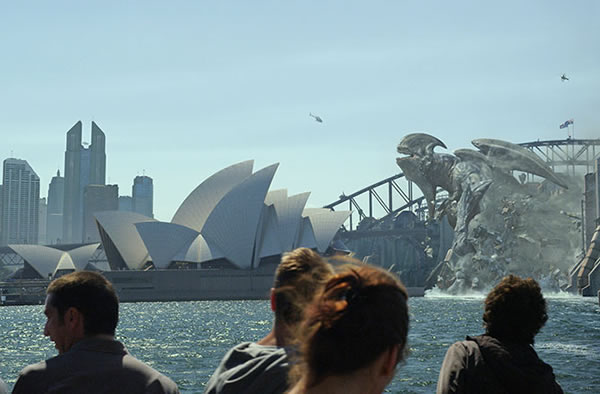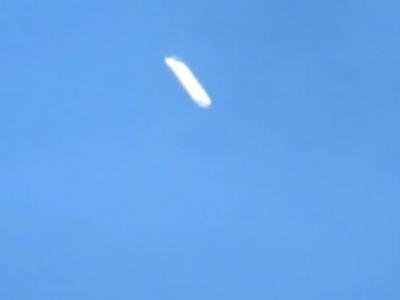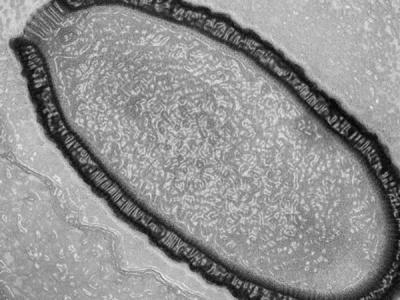Know Your Giant Monsters!
Run For Your Lives
A Kaiju, code name Leatherback, in a scene from the sci-fi adventure movie "Pacific Rim."
Warner Bros. Pictures
It's like the old saying goes: Nothing is certain in life except for death, taxes and giant monsters rising out of sea.
From director Guillermo del Toro, "Pacific Rim" is an old-fashioned creature feature in which colossal monsters battle titanic robots to determine the fate of all mankind. As the monsters -- collectively called Kaiju -- ravage cities worldwide, scientists deploy 25-story-high robots called Jaegers to defend the population. The film is a tribute to those old Godzilla movies from Japan, with visual effects and creature design from some of the leading artists in the business.
In creating the film's Kaiju monsters, the designers looked to the animal kingdom. Director del Toro instructed his team to draw inspiration from nature's scariest creatures, especially lizards, crustaceans and insects. Of course, the old attack-of-the-giant-monsters premise has been a go-to idea in science fiction movies from as far back as the 1930s. Here we take a look at the history of giant monsters in film, as well as the some of real-world creatures that inspired them.
Creature Features Tap Into Fear
A Kaiju attacks Sydney Harbor in a scene from "Pacific Rim."
Warner Bros. Pictures
Giant monster movies represent an entire subset of science fiction films, and were particularly popular in the 1950s and 1960s. Director Guillermo del Toro has said that "Pacific Rim" is specifically inspired by the Japanese "Kaiju" film genre, in which unstoppable monsters rise from the sea to devastate cities and/or fight one another. (Kaiju translates roughly to "strange creature.")
The first Kaiju monster appeared in Ishiro Honda's 1954 film "Godzilla." In that story, a creature mutated by nuclear radiation rises from the ocean floor to devastate Japanese cities. The movie clearly references nuclear weapons and the devastation of Hiroshima and Nagasaki at the end of World War Two. Like Frankenstein's Monster, the creatures in Kaiju films can be seen as symbolic of larger real-world fears -- science and weaponry run amok.
Godzilla and the Dragon
Godzilla terrifies the locals in a scene from the 1971 film "Godzilla vs. The Smog Monster."
Getty Images
Godzilla, undisputed king of the Kaiju monsters, has starred in more than 30 feature films in Japan, Europe and the United States. The name "Godzilla" (or "Gojira") is a combination of the Japanese words for "gorilla" and "whale." In the course of the franchise's history, Godzilla's physical attributes have been in constant flux, though he usually retains his signature atomic fire-breath weapon. His allegiances are a bit dodgy, too. One day he's defending mankind against rival monsters, the next day he's stomping Tokyo again. Giant sea monsters -- what can you do?
In the real world, the infamous Komodo dragon is the planet's largest species of lizard. Native to a few small islands in Indonesia, the Komodo dragon can grow to 10 feet in length and more than 300 pounds.
The Leatherback Creates a Kaiju
Gamera, a nuclear turtle, causes delays at the airport.
Courtesy of Shout! Factory
Japan's second-most famous Kaiju monster is the terrifying Gamera, a giant fire-breathing turtle with an impenetrable protective shell. In the mythology of the original film, released in 1965, Gamera got his powers by way of a nuclear explosion and his subsequent consumption of petroleum pollution. Surely Gamera's most intriguing characteristic, from a biological standpoint, was his ability to retract his limbs, fire jet thrusters, and fly for hundreds of miles.
Turtles in the real world can't quite manage this neat trick, but they can get pretty big. The leatherback sea turtle (Dermochelys coriacea) can grow 8-10 feet in length and weigh upwards of 2,000 pounds. Not coincidentally, one of the Kaiju monsters in "Pacific Rim" is code-named Leatherback.
Moth Power Should Only Be Used for Good
Mothra the giant moth soars menacingly over Tokyo in a still from the 1961 Japanese film, directed by Ishiro Honda.
Getty Images
One of the Kaiju film genre's undisputed good guys, Mothra isn't a guy at all. Almost always depicted as female, Mothra is a protector of mankind and has done battle hundreds of times in both larval and moth form. The science, as usual, gets a little wonky. In larva/caterpillar mode, Mothra bites with her mandibles and shoots out sticky webs to entrap opponents. But she gets really tough in full-grown imago stage, where her wings produce gale-force winds as she fires off energy bolts, poison darts and suffocating spore clouds. Oh, she's psychic, too.
Native to Southeast Asia, the atlas moth (Attacus atlas), is among the planet's largest insects, with a wingspan that can exceed 10 inches. We're going to need a bigger net.
Rodan Has Reptilian Roots
Monster takes city in a scene from the 1956 film "Rodan."
Getty Images
"Radon, Giant Monster of the Sky" (1956) introduced a new creature to the Kaiju canon -- a giant flying dinosaur who eventually become a trusted ally of Godzilla. ("Radon" would later be changed to "Rodan.") In the origin story of the first film, Rodan is hatched from a giant prehistoric egg uncovered by a mining operation near a volcano. In addition to his powerful beak and wing attacks, Rodan can emit a sonic boom attack from his thorax that tends to obliterate anything in its path -- buildings, tanks, aircraft, what-have-you.
In scientific taxonomy, Rodan would likely be slotted in the Pterosauria order -- winged lizards of the Triassic and Cretaceous periods. As such, Rodan would not technically be a dinosaur.
King Kong Gets Backdated
King Kong is poised above the New York skyline in a scene from the classic 1933 monster movie.
Getty Images
The original "King Kong," released in the spring of 1933, is generally considered to be the first giant monster movie in the annals of science fiction. In its technical aspects, the film certainly informed the later Kaiju movies of Japan. King Kong has been informally accepted into the roster of Kaiju monsters -- grandfathered in, you might say. While King Kong was an original creation of Hollywood writer Merian C. Cooper, the broad outlines of the story date back to 19th-century fiction concerning lost worlds and scientific expeditions.
Interestingly, in Cooper's original idea, King Kong was to face off against a giant Komodo dragon on Komodo Island in Indonesia. Thirty years later, in the midst of the Kaiju monster craze, Cooper's ape/lizard showdown would finally happen with "King Kong vs. Godzilla" (1962).
Real-World Creatures (and Plants) Inspire Monsters
A Jaeger robot battles a Kaiju, code name Knifehead, in a scene from "Pacific Rim.
Warner Bros. Pictures
Kaiju films are the particular inspiration for the creatures in "Pacific Rim," but plenty of other giant monsters (and giant robots) have invaded the silver screen over the years. Hollywood's first and best response to the Kaiju craze was the 1954 freakout "Them!" featuring giant ants, mutated by nuclear radiation. Since then we've had blobs, krakens, octopi, spiders, scorpions, tomatoes, space amoebae, 50-foot women and whatever that thing was in "Cloverfield." And don't forget the immortal 1968 epic, "Bambi Meets Godzilla."(Jul 12, 2013 07:30 AM ET // by Glenn McDonald)
